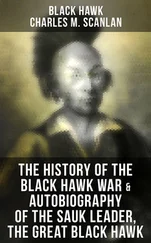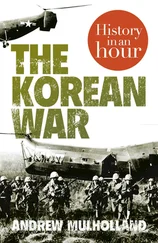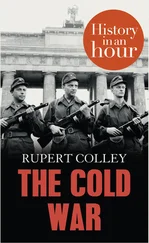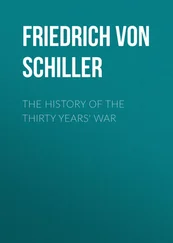The United States could not be bought, or even intimidated, but it had a long history of looking the other way if not immediately threatened.
A war is made when a nation or group of nations is frustrated in political aims or when ends can be achieved in no other way. Communism was receding from its high-water mark in Europe, and the Atlantic Treaty Organization promised new stability there. It was succeeding in Asia, but the United Nations-sponsored Taehan Minkuk stood in its way. The Republic of Korea was not vulnerable to subversion, but it was vulnerable to armed force. And if it fell, the Russians saw, as the Americans did only imperfectly, that Communist control of the peninsula would soon become disastrous to the American presence and prestige in Japan.
Clausewitz, whom the majority of Americans read only to try to refute, had written: War is not pastime, no mere passion for daring and winning, no work of a free enthusiasm; it is a serious means to a serious end. War always arises from a political condition and is called forth by a political motive. Beside this passage, Lenin had drawn a marginal line.
A war is made when a government believes that only through war, and at no serious risk to itself, it may gain its ends.
Even before Dean Acheson spoke and told the Russians what they already knew, the Communist leaders were agreed. Soon, Senior Colonel Lee Hak Ku and his brother staff officers would receive orders, in Cyrillic script, to be translated into the Korean Hangul.
It was to be a bold stroke, with every chance of success.
It would almost succeed.
| Go to Table of Contents |
4
The Plan of General Chae
Surprise may decisively shift the balance of combat power in favor of the commander who achieves it. It consists of striking the enemy when, where, or in a manner for which he is unprepared.
— Field Service Regulations, Operations, United States Army.
THE ONLY AMERICAN soldier on the 38th parallel on Sunday morning, 25 June 1950, awoke at daylight to the sound of cannon. Captain Joseph R. Darrigo, Assistant Adviser to the 12th Regiment, 1st ROK Division, had quarters in a house just northeast of Kaesong. Half awake, he lay in bed, listening; it had been raining, and the sound he heard could have been thunder. Then he heard the whine of shell fragments through the air and the slap of small-arms fire against the house.
Captain Darrigo came awake. He found his trousers, and with his shoes in one hand and his uniform shirt in the other, he rushed from his bedroom. He ran into his frightened Korean houseboy on the stairs.
Darrigo's jeep was parked just outside the house, and the two of them made a dash for it. Outside they saw no one, but the sound of firing was continuous, reverberating from the bare hillsides and amplified by the low clouds. Darrigo started up the jeep and spurted southward toward Kaesong.
Arriving at the traffic circle in the center of the city, he stopped and looked around. He saw the railroad station, less than half a mile away, and noticed that a dozen railway cars had just pulled into it. As he watched, what seemed a full regiment of men in mustard-colored brown uniforms began leaping from the train.
Darrigo knew that the rail line, which had been torn up across the demarcation zone just north of Kaesong when the bamboo curtain crashed down, must have been relaid during the night by the Inmun Gun. Then they had loaded a train with troops, and while their artillery and frontal assault crashed against the thinly held position along the parallel, this train had puffed calmly into Kaesong to take the ROK's in the rear.
Men began advancing toward the traffic circle, and rifle fire slashed near Darrigo's quarter-ton. Captain Darrigo saw that there was nothing he could do in Kaesong; he could not even rejoin the 12th Regiment beyond the town. He put the jeep in gear and roared south, speeding across the Imjin River to Munsan-ni.
The assault of the North Korean People's Army—the NKPA, in United States Army terminology—while completely coordinated did not fall everywhere at once. Rather, it came in a series of blows, beginning at exactly 0400 in the west and continuing eastward for more than an hour.
Since the South had been heavily infiltrated with line crossers and Communist agents, the NKPA without exception knew the location of every South Korean defense unit, and sent superior forces against it. And almost without exception, the assault took the ROK units by complete surprise.
Many officers, most American advisers, and a large number of enlisted men were absent on pass to Seoul or other towns. And while the ROK's had deployed four divisions along the border, only one of the three regiments of each division was actually occupying its preplanned defensive position. The remaining regiments generally were in reserve areas from ten to forty miles south of the parallel.
The armored fist of the NKPA, then, struck not only against an utterly surprised ROK army, but a ROK army not deployed for battle. This factor, even more than lack of equipment or status of training, was to be decisive.
At approximately 0600, KMAG HQ in Seoul received a radio message from the advisers of the ROK 17th Regiment on the Ongjin Peninsula west of Seoul. They reported: "Regiment under heavy attack, about to be overrun." They requested instructions. No orders had been issued to KMAG to cover the situation developing on Sunday morning. Were the American officers to fight alongside the ROK's, or merely to continue their advisory duties, or to withdraw, since this was a war of Korean against Korean?
Ambassador Muccio's feeling was that KMAG should stand aside, following the precedent set earlier in China's civil war. Two volunteer aviators from KMAG HQ flew the five Americans on the Ongjin Peninsula back to Seoul in light L-5 liaison planes.
The Ongjin Peninsula west of Seoul had been considered defensible, but within hours the remnants of Colonel Paik In Yup's 17th Regiment were evacuated by LST's to Inch'on.
Farther east, the assault that had awakened Captain Darrigo rolled up the defenses north of Kaesong. Only two companies of the ROK 12th Regiment were able to flee south across the Imjin River; the others were killed or captured. The remaining regiments of the ROK Ist Division, the 13th and 11th, were at Korangp'o-ri, fifteen miles east of Kaesong, and in reserve just north of Seoul. They were commanded by Colonel Paik Sun Yup, a very young but able officer.
At the time Captain Darrigo was watching the NKPA detrain in Kaesong, Colonel Paik and several of his staff were in Seoul, beating on the door of the KMAG compound where Darrigo's boss, Lieutenant Colonel Lloyd Rockwell, was sleeping. As soon as they had got Rockwell awake, the Koreans told him of the NKPA assault. Colonel Paik then got in touch with his 11th Regiment by phone and ordered it to move north to Munsan-ni, south of the Imjin River, and to take up already prepared defensive positions alongside its sister regiment at Korangp'o-ri.
In earlier discussions, both Rockwell and Paik had agreed that the 1st Division could hold against an attack from the north only on the south side of the Imjin. Now they and the staff proceeded immediately up to that river and ordered the bridges blown. But the NKPA was so close upon the rear of the retreating 12th Regiment that the order could not be executed.
The 11th and 13th regiments, by midmorning, were heavily engaged with the NKPA 1st Division and the 105th Armored Brigade. Korean soldiers were as brave as any, but they soon found they had no weapons to halt the Russian-built T-34 tanks. The 2,36-inch rocket launchers furnished them by the U.S. Army could not be counted on to penetrate the Russian armor, and they were very weak in artillery. But the 1st Division held at Korangp'o-ri.
Читать дальше












